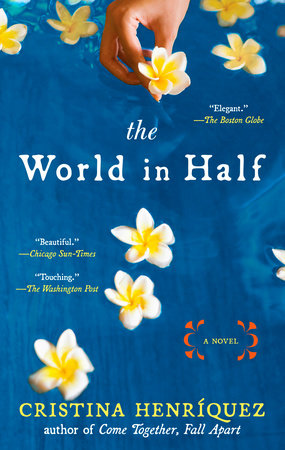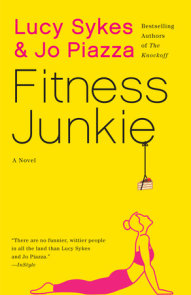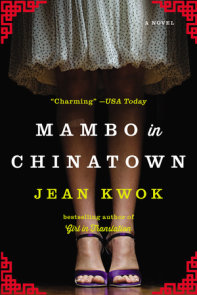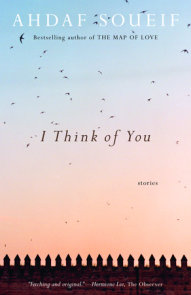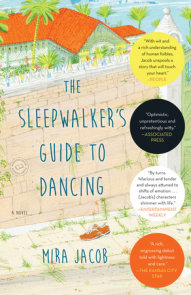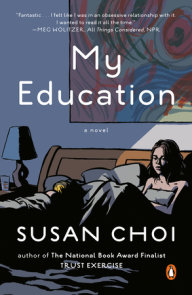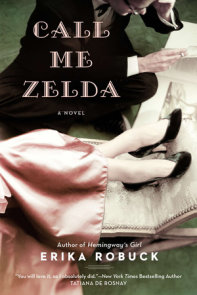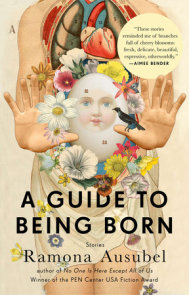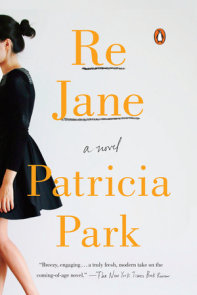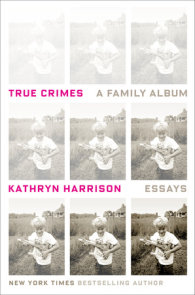READERS GUIDE
Questions and Topics for Discussion
INTRODUCTION
Miraflores has never known her father. She thought that when her pregnant mother left Panama and returned to the United States decades ago, her parents had cut all ties to each other. But when Miraflores discovers letters from her father buried in her mother’s desk drawer, she realizes that her father did want to know her—and that the love between her parents was greater than she had ever imagined. In secret, Mira plots a trip to Panama to search for the father she has never met, with the hope that reconnecting with him may unlock the secrets of her own past and help save her mother’s life.
What begins for Miraflores as a quest to reconnect with her father becomes a journey that will change the course of her life completely. In the maze of Panama City’s colorful streets, she discovers new ways of looking at her surroundings—and herself. In gorgeous, shimmering prose, The World in Half delivers the story of a young woman reconciling an existence between two cultures and confronting a life of hardship with an endless capacity to learn, love, and forgive.
ABOUT CRISTINA HENRIQUEZCristina Henríquez is also the author of Come Together, Fall Apart: A Novella and Stories and The World In Half. Her stories have been published in The New Yorker, Glimmer Train, Ploughshares, TriQuarterly, andAGNI, and her nonfiction has appeared in The New Yorker, The Oxford American, and Preservation. She was featured in Virginia Quarterly Review as one of “Fiction’s New Luminaries,” and is a recipient of the Alfredo Cisneros Del Moral Foundation Award. She earned her undergraduate degree from Northwestern University and is a graduate of the Iowa Writers’ Workshop. She lives in Chicago.
DISCUSSION QUESTIONSThe first chapter of the novel, “Origination,” begins:”More than three thousand miles below the surface of the earth is its core. It’s taken scientists a long time to learn anything about it. Most of them would readily admit that they know more about every other planet in the solar system than they do about the pit that’s at the center of ours.”What kind of tone does Henríquez set with these opening lines? How does it relate to the journey that Mira takes to Panama? Do you think Mira gets to the core of what she’s looking for? What does she discover? What remains a mystery?Science looks for proof and concrete evidence. In what ways is Mira’s journey a scientific expedition? What evidence does she collect? Give examples from her experience.At several points, Mira and her mother refer to their radically different senses of style: Mira rarely gets dressed up while her mother is preoccupied with her appearance. Why do you think Henríquez draws parallels between the two? What, if anything, does it say about the generational differences between Mira and her mother? About their different views on outer vs. inner strength?Mira is fascinated by the feel and shape and patterns of the earth, the details of the landscape in both Panama and Chicago. Why does the landscape of a place have such an effect on Mira’s experience? How would you describe Mira’s inner landscape before going to Panama? After? Her mother’s? Danilo’s?“The key to finding lost things, though, is knowing where to look. And when you don’t know that, sometimes you just have to hope that something will break wide open.”
What does Mira mean by this? Do you agree?Both Miraflores and her father share a name with a lock on the Panama Canal. Locks control water levels by manipulating naturally built water pressure. How are the locks symbolically significant in the novel?On page 116, Mira says, “What I learned about the Panama Canal is what I learned in school.” What did you know about the Canal before reading the book? How did the novel change—or challenge—your understanding of the geography, history and symbolism of the waterway?At the novel’s close, Mira is describing her mother’s struggle with Alzheimer’s to Danilo “my mother’s brain—her mind, her life—fractured, was fracturing still, into a thousand pieces. I don’t know how to say all of that in Spanish, though. It doesn’t matter. As usual, Danilo understands me.” Despite language barriers and limitations, Mira feels understood by Danilo. Why? And how? How does language shape Mira’s journey? What is the difference between Mira and Danilo’s friendship and the friendship between Mira and her friends from Chicago? Do you have someone in your life that understands you the way Danilo understands Mira?“People live—I mean, really live—in spaces that aren’t on a map,” (page 129) says Danilo. What do you think he means by this? Do you agree? Where do people “really live”?Letters reveal much of the story in The World in Half. Which ones stood out for you? Why are letters so powerful to Mira?Imagine Mira’s future—and her mother’s. What will happen in two months? In a year? In five? What letters might Mira write?







